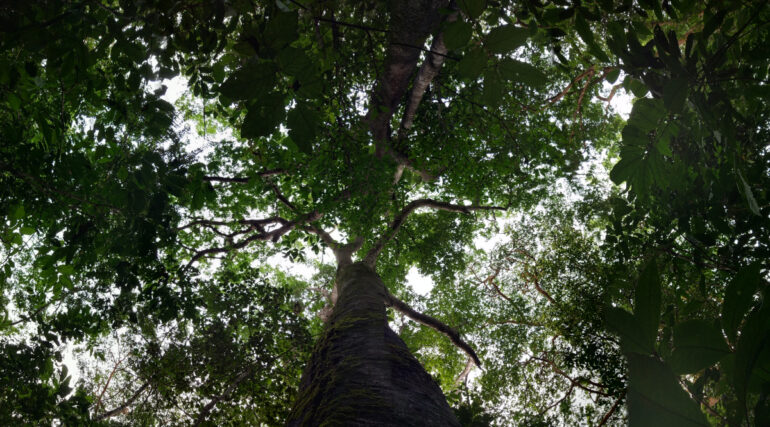Stem growth of tropical trees is reduced in years when the dry season is warmer and drier than normal. This is the main finding of a global tree-ring study published in Nature Geoscience led by Wageningen University & Research. The study is based on a new global network consisting of over 14,000 tree-ring data series from 350 locations across the tropics. The researchers found that the effect of drier and hotter years is larger in more arid or warm regions. This suggests that climate change may increase the sensitivity of tropical trees to climatic fluctuations.
For a long time, ecologists assumed tree rings to be absent in tropical trees because of a lack of cold season. But in recent decades, the formation of growth rings has been proven for hundreds of tropical tree species. First author, Prof Pieter Zuidema of Wageningen University & Research: “These tree rings contain a wealth of information on the growth history of trees. In this study we exploit that potential. For the first time, we get a pantropical picture of how tropical tree growth reacts to climate fluctuations.” The study was an international collaborative effort, in which 100 authors contributed tree-ring data collected in 30 tropical and sub-tropical countries.
CO2 sequestration
The results of this study help to understand the large fluctuations in carbon uptake by tropical vegetation globally. Zuidema says that “model simulations show that during hotter or drier years, tropical vegetation grows less and therefore takes up less CO2 from the atmosphere. But actual measurements of vegetation growth have been lacking so far. Our results thus provide empirical support of these global models.”
The authors were surprised by the finding that during the dry season climate had a stronger effect on tree growth than the wet season. Co-author Valerie Trouet from the University of Arizona: “We know that photosynthesis and wood production of tropical trees generally peak during the wet season. So why do year-to-year fluctuations in stem growth depend on the dry season? That surprised and puzzled us. Our explanation is that water is available for a longer period of time during years with wetter or cooler dry seasons. Put simply, the growing season is longer. This then leads to more stem growth.”
Filling the gap
The study fills an important data gap in tree-ring data. Zuidema says that “world maps showing the locations of tree-ring studies typically have a hole in the middle, in the tropics. Our network fills that tropical data gap.” Along with the publication of the study, tree-ring data from more than 100 study locations are uploaded to the global database for tree-ring data, the International Tree-ring Databank (ITRDB). Zuidema says that “In this way the tree-ring data we’ve put together will be freely available for everyone.”
Climate change
Global warming is expected to increase temperature at the study sites by 0.5 degree per decade in the future. The authors expect warming to aggravate the negative effects on tree growth of hotter and drier dry seasons. If slower growth increases the risk of tree death, tropical vegetation may more frequently become a source of CO2 instead of absorbing this greenhouse gas.
More information:
Pieter Zuidema, Tropical tree growth driven by dry-season climate variability, Nature Geoscience (2022). DOI: 10.1038/s41561-022-00911-8. www.nature.com/articles/s41561-022-00911-8
Provided by
Wageningen University
Citation:
Heat and drought slow down tropical tree growth (2022, March 31)



